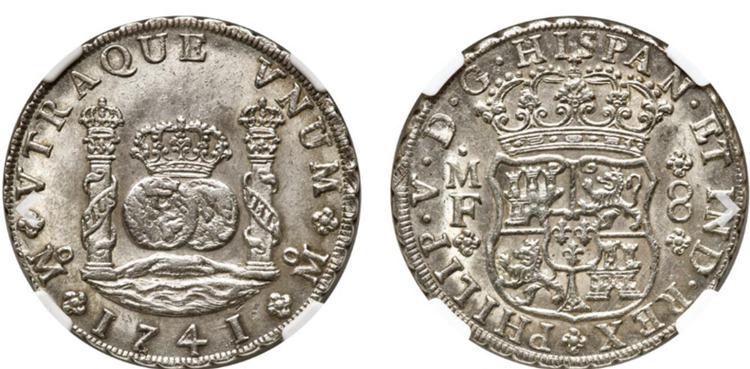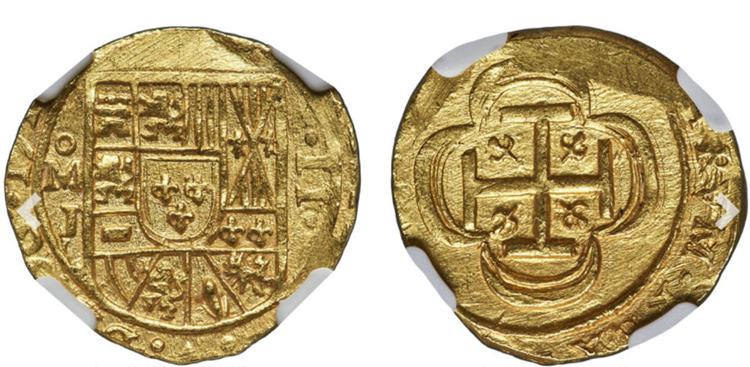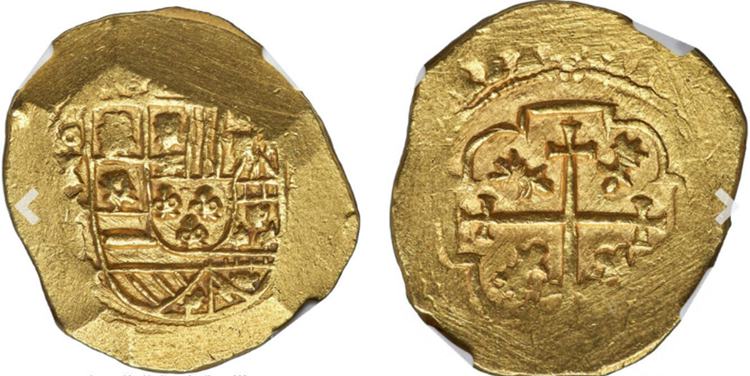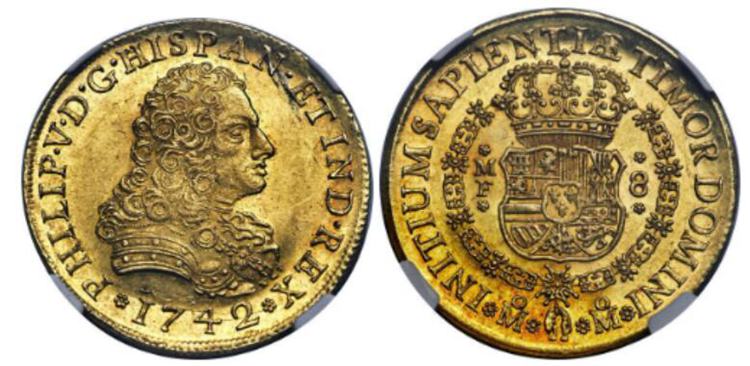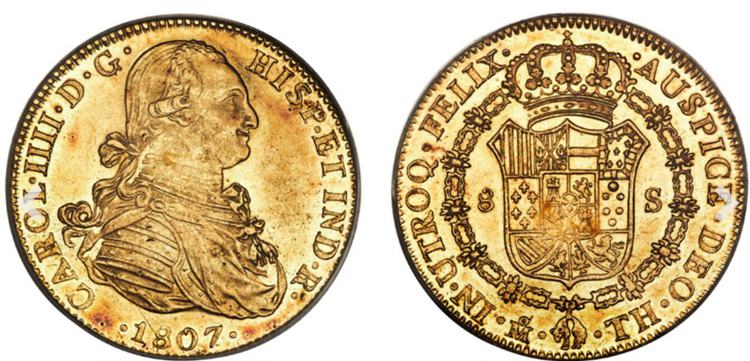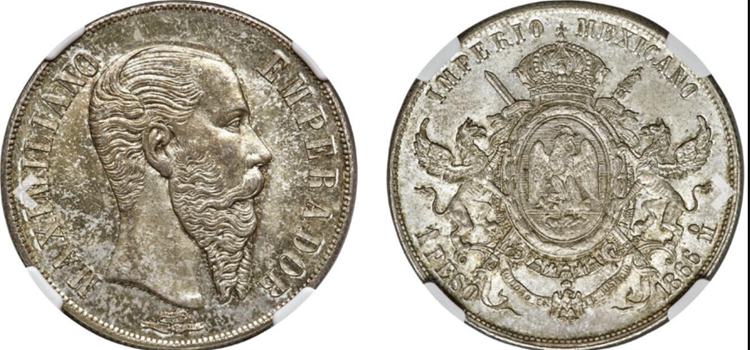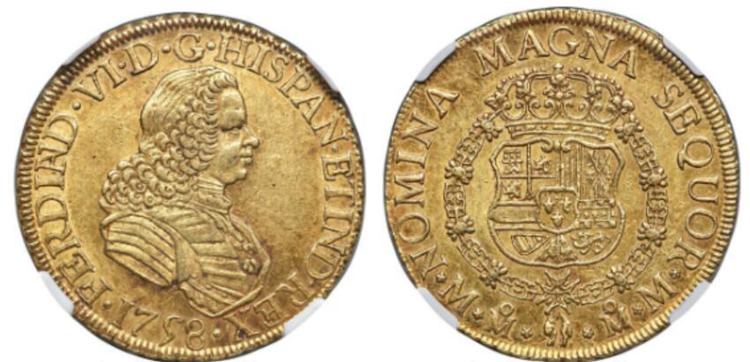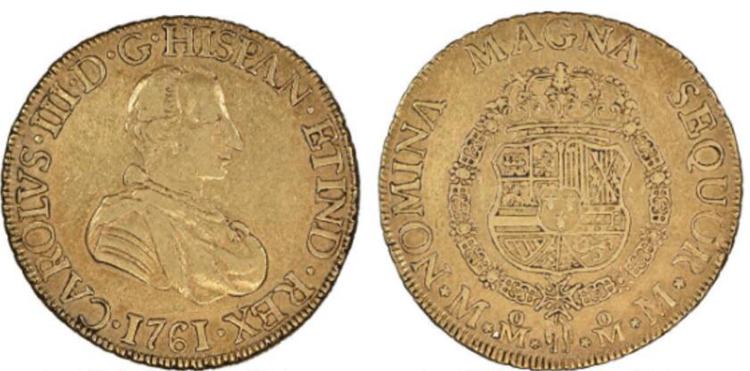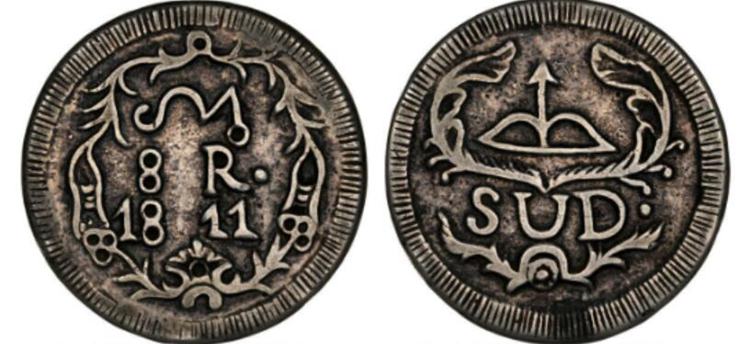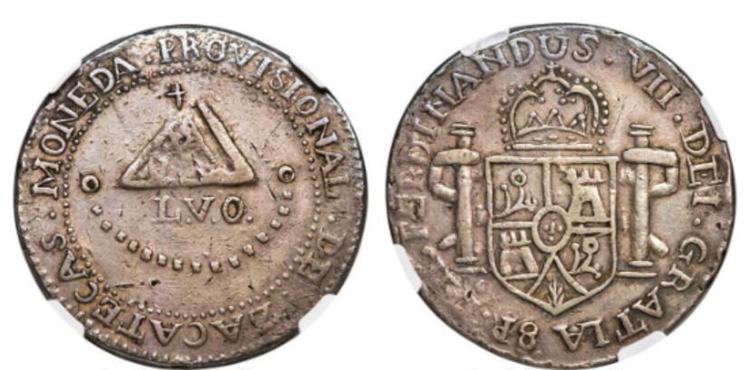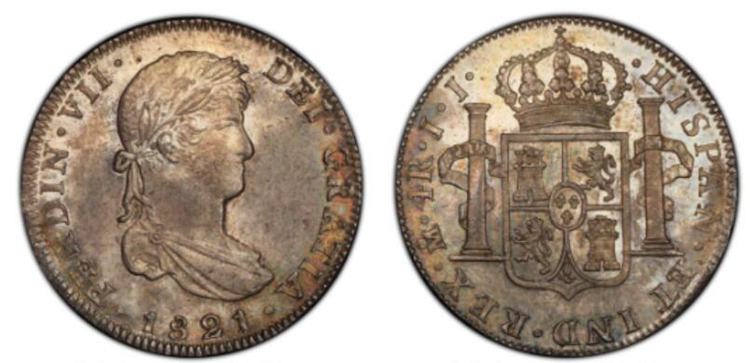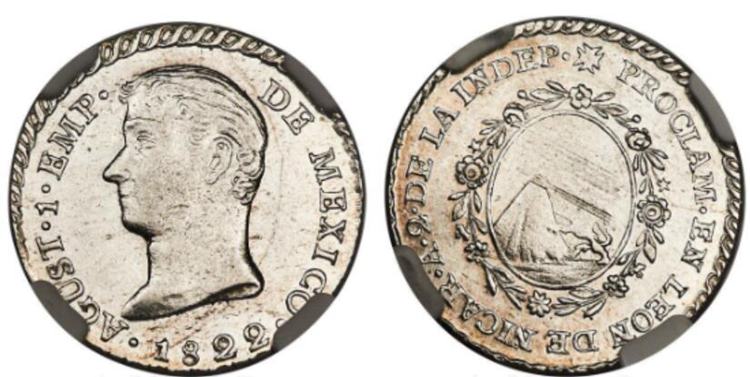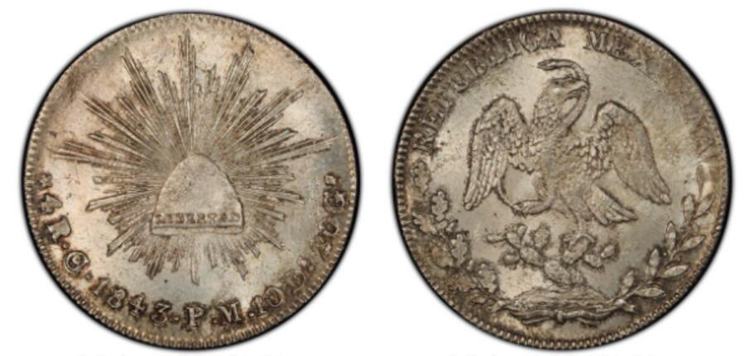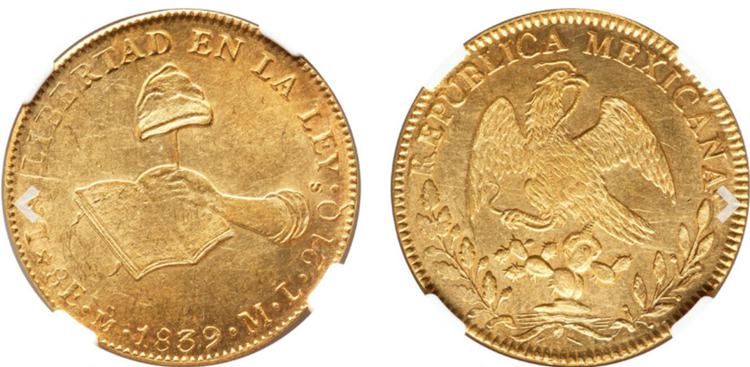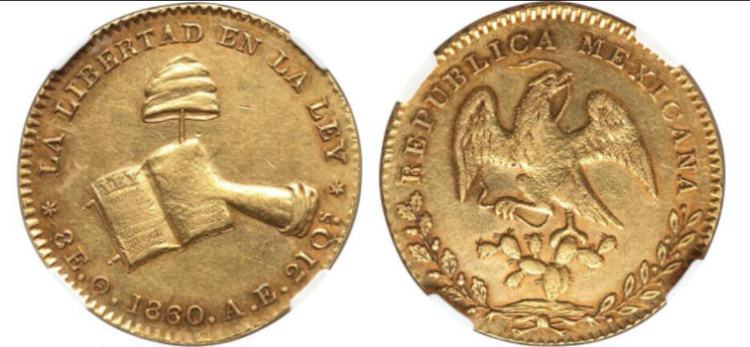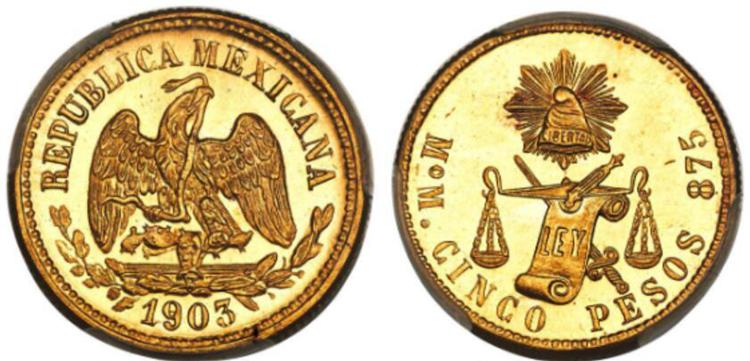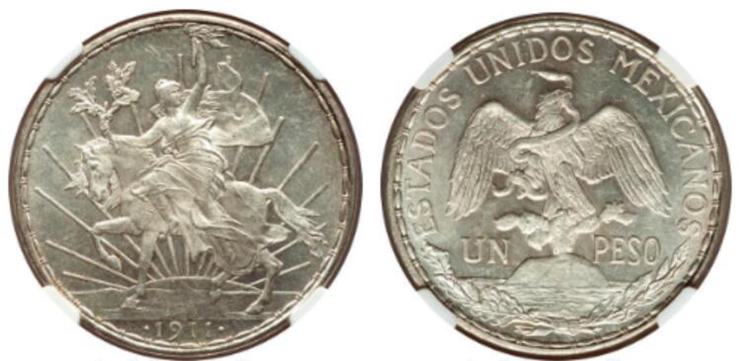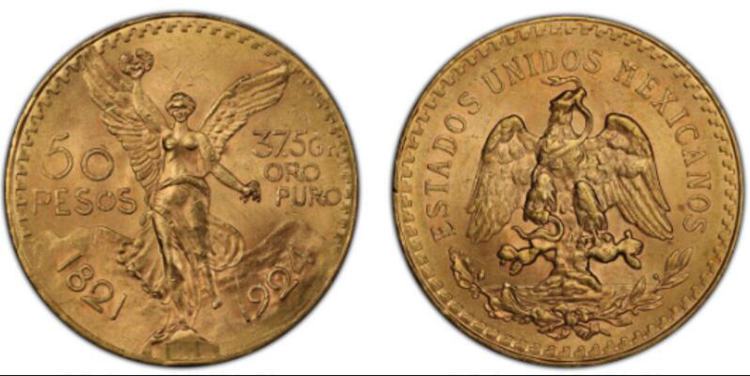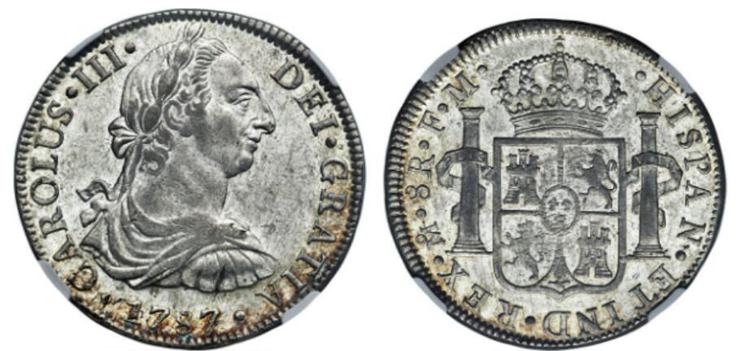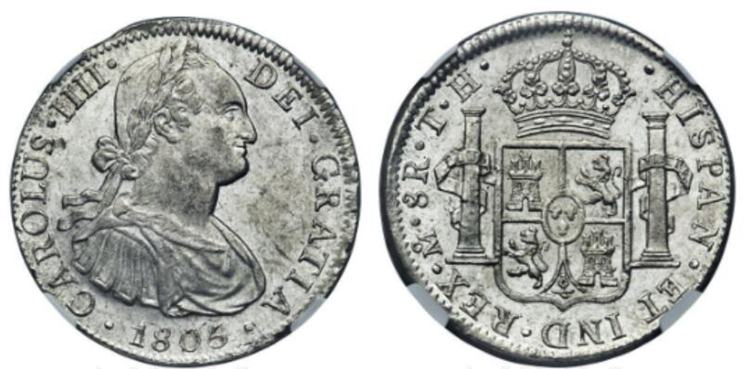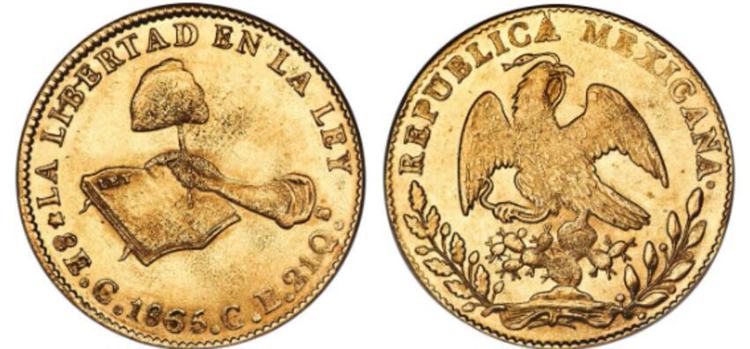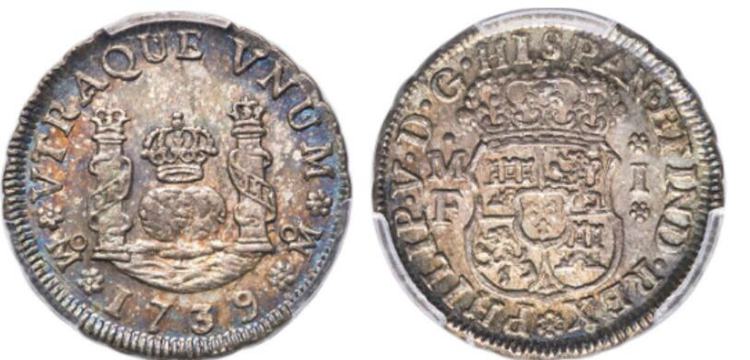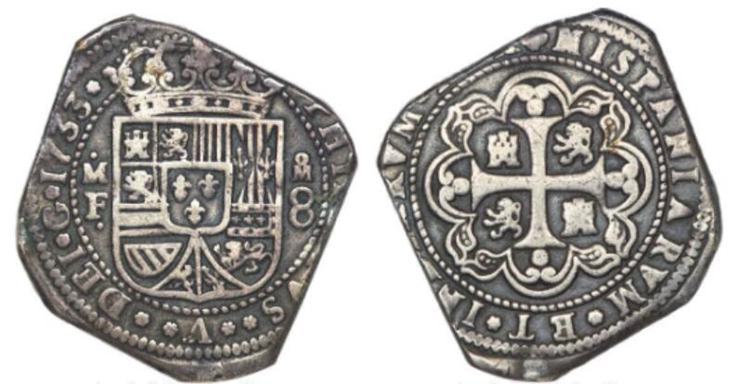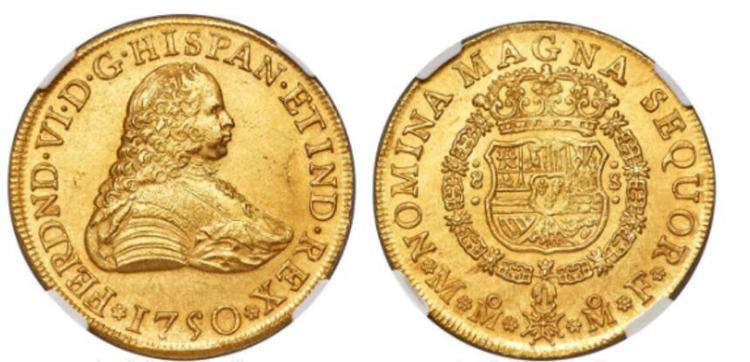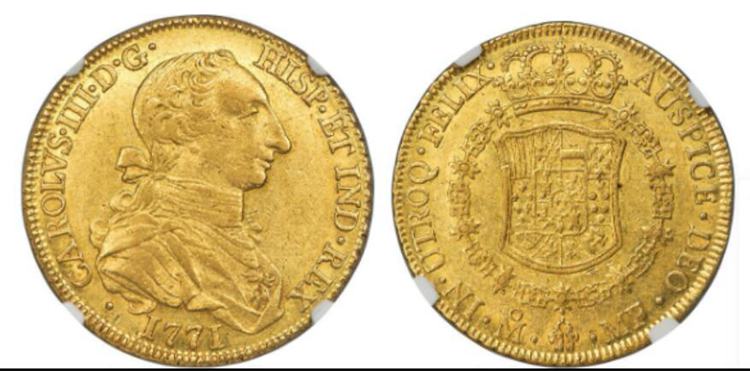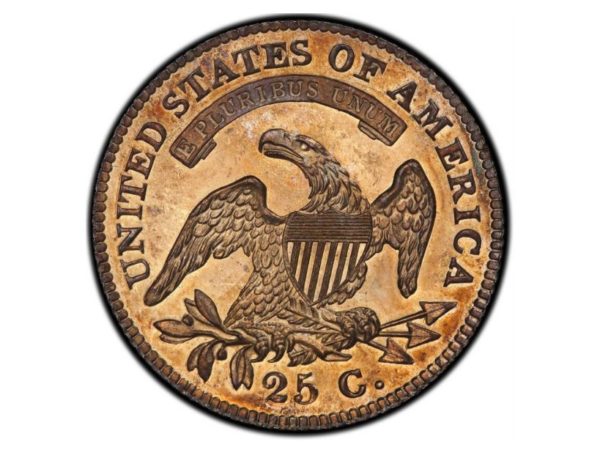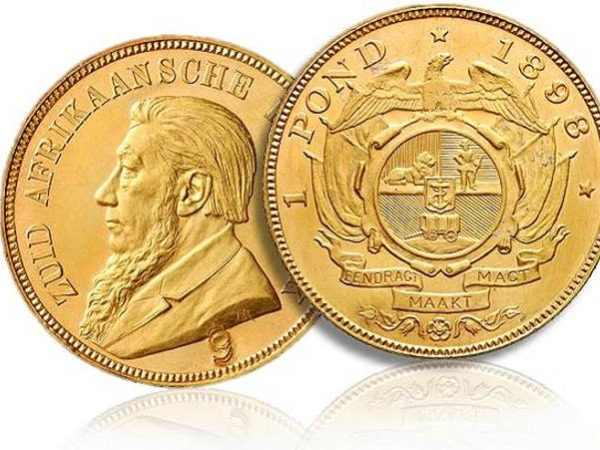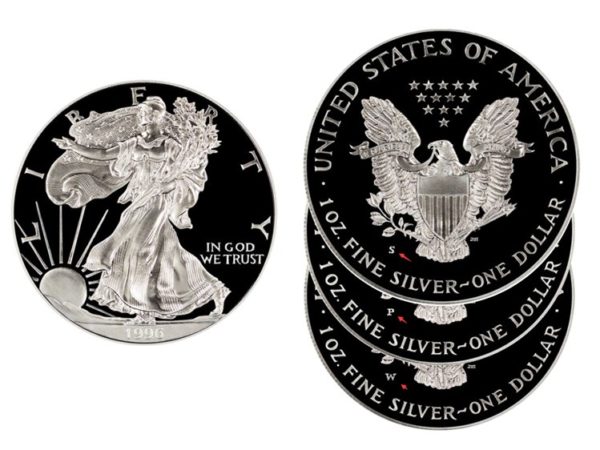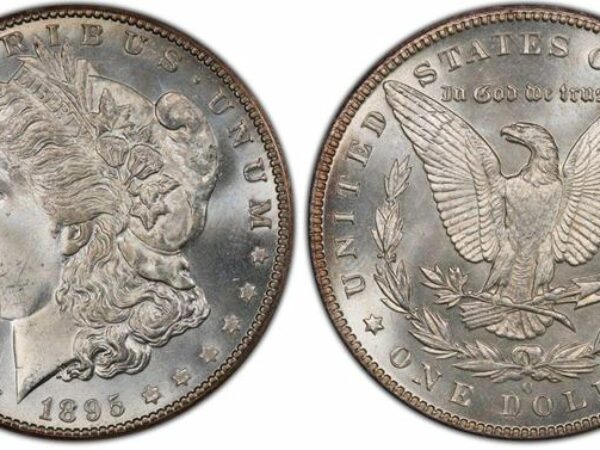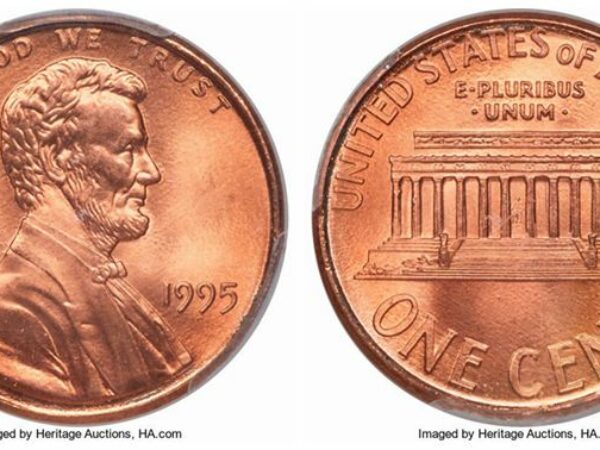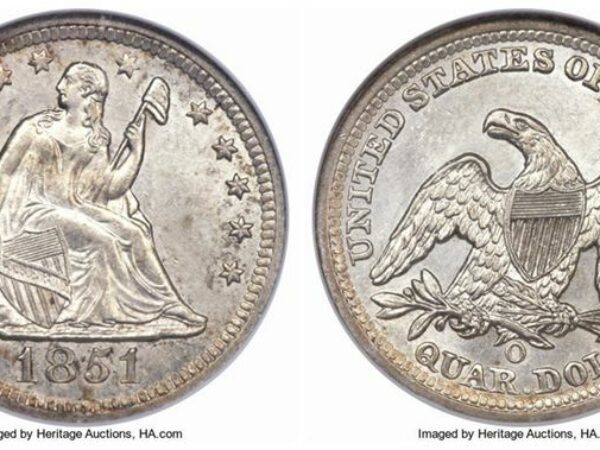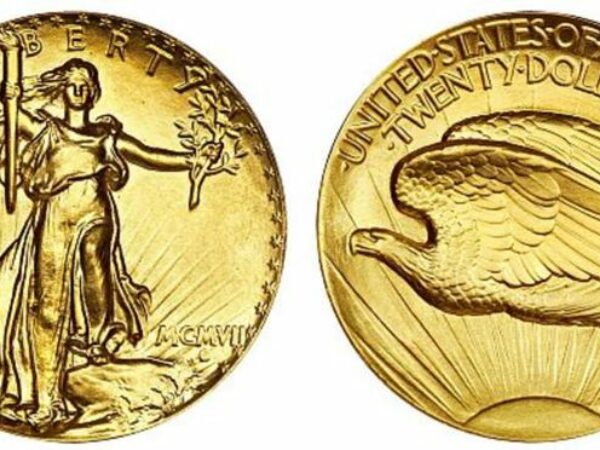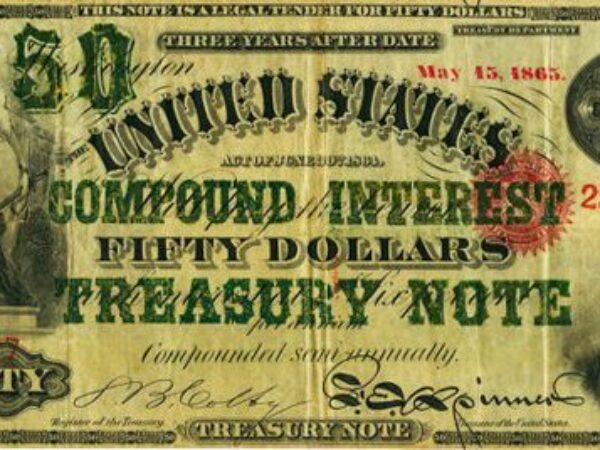When it comes to coins, Mexico definitely holds a position among the countries or nations with the most interesting and versatile history. Before Mexico became what we now know, they were a people of color, they traded and they also fought to keep their civilization.
Before the world was introduced to the peso, Mexico used a different currency. Gold coins were used as far back as the 1300s. If you found one of those gold coins now, how much do you suppose you can get for them?
In this article, you are presented with 25 of the most valuable Mexican coins that have been sold. Look out for some history of the Mexican coins in this article as well. First, take a dive into these sold pieces of coins.
Table of Contents
25 Rarest And Most Valuable Mexican Coins: List
No |
Date |
Name |
Grade |
Price |
1 |
1741 |
Philip V 8 Reales |
MS 64 |
$15,000 |
2 |
1714 |
Philip V gold Cob 2 |
MS 65 |
$7,2000 |
3 |
1820 |
Ferdinand VII gold 8 |
MS 64 |
$15,600 |
4 |
1742 |
Philip V gold 8 |
MS 62 |
$19,200 |
5 |
1807 |
Charles IV gold 8 Escudos |
MS 63 |
$10,800 |
6 |
1866 |
Maximilian Peso |
MS 65+ |
$17,400 |
7 |
1758 |
Ferdinand VI gold 8 Escudos |
AU 55 |
$9,000 |
8 |
1761 |
Charles III gold “Order on Chest” 8 Escudos |
XF 40 |
$6,000 |
9 |
1811 |
Oaxaca. Ferdinand VII cast silver 8 Reales |
XF 40 |
$10,200 |
10 |
1811 |
Zacatecas. War of Independence – Ferdinand VII Provisional 8 Reales |
XF 45 |
$6,600 |
11 |
1821 |
Ferdinand VII 4 Reales |
MS 64 |
$20,400 |
12 |
1822 |
Augustin I Iturbide silver “Leon Proclamation” Medal |
MS 61 |
$9,000 |
13 |
1843 |
Republic 4 Reales |
MS 63 |
$3,840 |
14 |
1839 |
Republic gold 8 Escudos |
MS 61 |
$6,600 |
15 |
1860 |
Republic gold 8 Escudos |
NA |
$7,800 |
16 |
1903 |
Republic gold 5 Pesos |
MS 64+ |
$2,280 |
17 |
1911 |
Estados Unidos “Caballito” Peso |
MS 64 |
$3,120 |
18 |
1924 |
Estados Unidos gold 50 Pesos |
MS 64 |
$4,080 |
19 |
1787 |
Charles III 8 Reales |
MS 62 |
$2,880 |
20 |
1805 |
Charles IV 8 Reales |
MS 64 |
$2,400 |
21 |
1865 |
Republic gold 8 Escudos |
MS 64 |
$9,000 |
22 |
1739 |
Philip V Real |
MS 66 |
$8,400 |
23 |
1733 |
Philip V Klippe Cob 8 Reales |
VF 35 |
$2,280 |
24 |
1750 |
Ferdinand VI gold 8 Escudos |
MS 60 |
$7,200 |
25 |
1771 |
Charles III gold 8 Escudos |
AU 55 |
$9,000 |
1. Philip V 8 Reales
Grade: MS 64
Price: $15,000
In Mexico, the reale was a currency that was issued until the year 1897. The peso circulated along with the real and came to replace it in time. This coin is one of the Spanish Reales which were in circulation in 1741. This coin is referred to—among numismatics—as a high-grade pillar 8 reale.
The coin features two pillars with a crown sitting on two crowns. The two pillars have a crown sitting on them. They are referred to as the pillar of Hercules from Greek mythology.
There are those who believe the pillars having banners around them is the origin of the dollar sign but this claim has not been substantiated. The metal is silver and the melt value at the time of the sale of the coin at Heritage Auctions on August 25, 2022, was $15.16.
2. Philip V gold Cob
Grade: MS 65
Price: $7,200
This coin was a product of the Mexico mint but was issued by Spain since they were ruling at the time. The coin has an irregular, round shape and was struck with gold. The obverse features crowned arms, a mintmark, an initial, and a value on the right. The language in which letterings are written in Latin and the word means, ‘Philip IV by the grace of God.’
On the reverse, you have words written in Latin and the legend and date. When translated the words mean King of Spain.
This particular coin features preservation that’s generally not seen in this quality. Its appearance is a lemon-gold hue. It weighs 6.77 grams in gold. In today’s present gold price it is worth $351.10 melt value.
3. Ferdinand VII gold 8 Escudos
Grade: MS 64+
Price: $15,600
This coin came out of Mexico’s mint. It is graded MS 64 for its sheer luster and preservation. It ought to have been graded a Gem Mint State according to some opinions. At any rate, this coin is an outstanding example of Mexican 8 Escudos.
This 1820 coin shows almost all the finesse of a 21st-century coin. The image on the obverse is that of Ferdinand VII and it’s a standard circulation coin of the day. There’s even a record of the engraver who went by the name of Felix Sagau Dalmau de Galceran. On the reverse, you have the crowned arms held in an order chain.
According to other literature, this coin was minted in Madrid, Spain. This 8 escudos was made at the time Spain ruled over the people of Mexico hence its history is subject to the dictates of the king. What’s important though is that it was in circulation in the country of Mexico. It went on sale at Heritage Auctions on August 25, 2022.
4. Philip V gold 8
Grade: MS 62
Price: $19,200
This coin shows Spanish King Philip V on the obverse with flowing hair. The detail is high in the hair and the brooding features of the face. It is a circulation type of coin which was at 8 Escudos. There’s latin lettering on the reverse as well: INITIUM SAPIENTIAE TIMOR DOMINI.
One other feature that makes this coin such an amazing sample is how it looks like today’s proof coin. And the immense detail in the design makes it seem this was struck on a proof planchet. It was sold on Heritage Auctions in 2022.
5. Charles IV gold 8 Escudos
Grade: MS 63
Price: $10,800
This coin shows the armored bust of Charles III with the legend CAROL • IIII • D • G • on it. On the reverse, you have the crown shield surrounded by order chains. The legend on the reverse is IN • UTROQ • FELIX • AUSPICE • DEO.
According to Heritage Auctions experts, this particular specimen is different from all the others in its category. The others barely make it past AU in grading but this incredibly patinated coin is an eye-catcher. This coin is one of the 77 examples entered for grading. It is estimated to rise in bids in the future.
6. Maximilian Peso
Grade: MS 65+
Price: $17,400
The denomination of this coin is 1 peso and the country it was made for was Mexico. The emperor at the time was Maximilian. He has a severe appearance and a jutting beard. His image is seen on the obverse here with the legend appropriately declaring his name.
The reverse features a crowned oval shield. There are two horses with wings and an eagle in the middle. This emperor was an Austrian archduke and he ruled as emperor of the second Mexican empire between 1864 and 1867 when he was executed.
France, Spain, and the United Kingdom invaded Mexico to force it to pay its debt to the three nations. The French however sought to colonize the country. To succeed it established Maximilian as emperor of a Mexican monarchy.
The United States ended its own civil war and provided aid to the ailing Mexican republic which helped defeat the French monarchy. They captured Maximilian and executed him. This coin was made around the time before the Mexican revolt against France. It was sold at Heritage Auctions in 2022.
7. Ferdinand VI gold 8 Escudos
Grade: AU 55
Price: $9,000
These 8 escudos from 1758 were made by the Mexican mint. It was a popular series at the time. The obverse shows the image of emperor Ferdinand VI who was also called the Learned and the Just. He was also heir to the former emperor Philip V.
The coin shows a sharp depiction of the emperor; the luster remains and the details show through in high contrast. The reverse features the regular details of the series—the chained crown, the legends.
8. Charles III gold “Order on Chest” 8 Escudos
Grade: XF 40
Price: $6,000
This coin is a variety from the Order Of The Golden Fleece. This series is considered an elusive one for its rarity. These were produced in 1791. Charles III was several things at different times. He was king of Spain from 1759 to 1788, Duke of Parma and Piacenza, King of Naples, and then king of Sicily. He reigned when Mexico was under Spanish control.
The reverse of the coin promotes the power of Spain with the chained crown. This specimen was graded XF 40 for the remaining luster you see on the coin.
9. Oaxaca. Ferdinand VII cast silver 8 Reales
Grade: XF 40
Price: $10,200
On November 25, 1812, a battle happened in Oaxaca, Mexico. It was between the royalist forces of the Spanish crown and Mexican insurgents fighting for independence from the Spanish empire.
The Mexicans won the battle. This coin here is a reminder of the battle. It was struck by the insurgents and they are now very rare. The appearance is like those of a gun metal which is appropriate given the origin. This is a surviving specimen and is considered very peculiar and a collector’s delight, especially for Mexicans.
10. Zacatecas. War of Independence – Ferdinand VII Provisional 8 Reales
Grade: XF 45
Price: $6,600
Before the 1812 battle between Spanish Royalists and Mexican freedom fighters, there was one in 1811 on April 15 which happened in Zacatecas. These Mexican insurgents were commanded by General Ignacio López Rayón while the Spanish side was led by José Manuel de Ochoa.
Lopez has previously defeated Ochoa in the battle of Puerto de Piñones. This coin is a reminder of the battle in the Mexican town of Zacatecas. The legend on the obverse declares that this coin was provisional money for Zacatecas. The color of the coin itself suggests its battle background.
11. Ferdinand VII 4 Reales
Grade: MS 64
Price: $20,400
His enemies called Ferdinand VII the felon King while those who loved him called him El Deseado, The Desired. He reigned twice, once when he was young and again from 1813 to 1833 when he died.
This coin belonged among a popular series of the time with the image of Ferdinand VII on the obverse. And this one here is the finest grade PCGS was able to grade.
The strike is properly centered, the color or alluring and the preservation is superb. On both sides, the coin features the popular and regular features of the coins of that series which began earlier.
12. Augustin I Iturbide silver “Leon Proclamation” Medal
Grade: MS 61
Price: $9,000
The man whose image is on the obverse of this coin was a Mexican general. His full name was Agustín Cosme Damián de Iturbide y Arámburu. He was also known as Agustin of Mexico. He was very active during the Mexican war of independence. In 1821 he was declared president of the regency after securing the secession of Mexico from Spain.
This coin shows so much luster and shine that one would think it was a proof coin. It is a very scarce issue to find. The coin was in circulation at a time when the country was in so much turmoil with few neighboring nations agreeing to recognize the position of Agustin.
13. Republic 4 Reales
Grade: MS 63+
Price: $3,840
The real was the name of the Mexican currency that was issued until it stopped in 1897. The first reales were issued by the Spanish colonial governments which were replaced by independent Mexican reales in 1822.
This specimen was issued in 1843. The back of the coin features a cap in the middle of a burst of sunshine. And on the front, the coin features an eagle with a snake caught in its beak. The eagle is standing on a crop of cactus and surrounded by the legends of the coin and two stalks of flowers. The words, REPUBLIC OF MEXICANA are written on the coin. This specimen was sold at Heritage Auctions on August 28, 2022.
14. Republic gold 8 Escudos
Grade: MS 61
Price: $6,600
Here is another republic coin, this one is made of gold. It has a cap on a stick held by a hand on the back. There’s also an open book on which the hand hovers. The legend here says, LA LIBERTAD. The obverse has the eagle with the snake caught in its beak. The legend on the obverse says REPUBLICA MEXICANA.
The eagle still eats the snake on the Mexican coat of arms today. The idea is based on the Aztec belief that they’d know where to build their city once they see an eagle eating a snake on a lake. Escudo literally means National shield of Mexico. The image characterizes the political ethos of Mexico for ages. It symbolizes that good will always win over evil.
The snake is often seen as an extension of the one from the biblical garden of Eden. This escudo here is a well-preserved coin from 1839 and it sold on Heritage Auctions in 2022.
15. Republic gold 8 Escudos
Price: $7,800
This Escudos was printed in the mint in Oaxaca. That coin from that mint is reputed to be very scarce possibly because only a few were minted there. This coin shares the same legends and features as the others in the series. Luster in this one is a little dull but present, and there’s some toning in the legends which makes them stand out.
16. Republic gold 5 Pesos
Grade: MS 64+
Price: $2,280
Years later and in 1903 there were some changes to the republic coin. These 5 pesos retain some of the design features from the escudos. The obverse retains the eagle devouring the snake and on the reverse is where major changes have been applied.
The cap is there with a burst of radiance in its background. Now there’s a scale, a scroll, a sword behind it. LIBERTAD is written on the cap. The obverse legend says, REPUBLICA MEXICANA, and the date below.
This specimen can possibly make the GEM grade on account of the shine. The untrained eye can easily think this is a proof coin. This example was sold at Heritage Auctions in 2022.
17. Estados Unidos “Caballito” Peso
Grade: MS 64
Price: $3,120
This coin is highly graded by NGC. The grade comes attached with a star. The proof-like appearance is appealing to the eyes. NGC graded 240 of these specimens and this one is in the top 10 beautiful ones.
Here the obverse spots the normal national coat of arms of Mexico—the eagle with the snake trapped in its mouth, the words ESTADOS UNIDOS MEXICANOS and UN PESO. The reverse shows a woman on horseback holding a torch to the sky and looking behind her. In the background are long rays of the sun. This coin has the date 1911 on it.
18. Estados Unidos gold 50 Pesos
Grade: MS 64
Price: $4,080
PCGS graded this coin as MS 64 for a good reason. It shows a lush presence in the features. These coins were first issued in 1921 in time for the commemoration of the 100th anniversary of the country’s independence from Spanish rule. This coin is also called the Centenario. These coins were struck with 90% gold, giving them a value of 50 Pesos.
There are two dates on the front of the coin; the date of independence and the date on which the coin was minted. There were restrikes of these coins from 1949 to 1972.
On the obverse, there is the image of a woman called the angel of independence. In the background are the mountains Iztaccihuatl and Popocatepetl said to be named so after two lovers who were Indians. The snake-eating eagle perched on the Thorny cactus is on the other side of the coin.
19. Charles III 8 Reales
Grade: MS 62
Price: $2,880
Charles III was king of Spain from 1716 to 1788. This coin shows an armored bust of him on the obverse. The legend on the coin here says CAROLUS • III • DEI • GRATIA •
On the reverse you have the crowned shield on a coat of arms flanked by pillars with banners around them. There’s a light tone of gold on the surface of this specimen. Both PCGS and NGC admit to the uniqueness of this coin. It was sold at Heritage Auctions on July 28, 2022.
20. Charles IV 8 Reales
Grade: MS 64
Price: $2,400
This Charles IV Real is from the year 1805. It was produced in the Mexico mint and still retains much of its luster. The surface has a greenish hue on it which can be attributed to age and moisture. The design stands in great detail still. The metal is silver.
21. Republic gold 8 Escudos
Grade: MS 64
Price: $9,000
This coin is one of the best out of the category that was graded. With a color as bright gold as this, it was bound to sell for a high price at auction. The metal used is gold and is worth about $1,430 when melted.
This coin has all the features of the republic gold 8 Escudos; the cap on a stick, the open book, and the legends. The reverse features the eagle eating the snake and standing on the cactus. The coin went on sale on May 5 2022 at Heritage Auctions.
22. Philip V Real
Grade: MS 66
Price: $8,400
From the category of reales comes this Philip V coin made in 1739. This coin has come a very long way to meet present-day conditions. It is amazing that it is well preserved. It is said to be among the best survivors from those days. This is the only current grade of this particular year by PCGS of NGC. It was sold on May 7, 2022.
23. Philip V Klippe Cob 8 Reales
Grade: VF 35
Price: $2,280
This is a very old coin from Mexico. It is from the year 1733 when Philip V was emperor of Spain and ruled over the people of the Americas. Klippe is a German word that describes a crag or rock. It is also used to describe objects that have irregular shapes, like a naturally formed rock.
This peculiarly shaped coin was made in a Mexican mint in 1733. It is an unusually beautiful specimen. All details are completely visible. It shows no striking error. It was sold at Heritage Auctions on May 7, 2022.
24. Ferdinand VI gold 8 Escudos
Grade: MS 60
Price: $7,200
A product of Mexico City mint, only 25,645 of these escudos were made in 1750. This escudo is conditional rare because many of them were melted while others stayed in circulation.
The fine and minute details on the surface of these coins are one of the best things about them.
On the reverse, you will note these fine details in the chains, the crown, and the coat of arms. Also in the image of Ferdinand VI; the hair, his armored clothes, and the areas around his jaw. All of this attests to the delicate care that was put into the strike. This was sold at Heritage Auctions in 2022.
25. Charles III gold 8 Escudos
Grade: AU 55
Price: $9,000
The year 1771 saw the last production of this variety of Charles III 8 escudo with a peculiar long nose. It was called the Rat Nose bust. You can hardly find this coin in AU grade and there’s been only one MS 60 of it all this time.
There’s a reduction in sharpness in this coin though, unlike the others on this list. Perhaps the high value is due to it being a Rat Nose bust variety. This one was sold at Heritage Auctions in 2022.
History of Mexican Coins
The Mexican currency is now called a peso, a word that means weight. Mexico isn’t the only country that uses the peso word. Chile, Columbia, and Cuba are examples of countries that use it too.
Reales
Before it was peso, the currency was real. The real was the name of the Spanish currency in the 16th to the 19th century. Weights varied from silver reals and gold escudos.
Each gold escudo was worth 15 to 16 Reales. Eight real coins of 24.44 grams were called pesos in Spanish territories of America but called dollars in Britain and in American colonies. They would often produce the pesos in Mexico where the gold mining sites were and ship them out to Europe and Asia.
Peso
Pesos have been a source of inspiration for many other countries’ currencies. The Japanese yen, US dollar, Spanish American pesos, and Chinese Yuan are all modeled after the Mexican peso. In fact, silver pesos were legal tender in the US for years till 1857 and also in China until 1935.
After independence, Mexico continued the system of 8 reales per peso until 1863 when Maximilian changed the system to 100 centavos per peso.
Peso Today
Mexico used the Nuevo peso at first, which means New Peso. It was necessary after the economic troubles caused by the oil crisis of the 70s. This new peso was valued at 1000 of the former one. The peso is now the official currency of Mexico. It follows the system of a division of 100 centavos.
Are Old Mexican Coins Rare?
Not all old Mexican coins are rare as you can buy them off eBay, Amazon, and many online selling platforms. Of course, you should be careful not to buy fake coins. Heritage Auctions sells Mexican coins just like many other platforms under the tag, World Coins.
Certain varieties and dates are rare. Others become rarer as time passes.
Frequently Asked Questions
What Mexican coins are valuable?
The most valuable Mexican coins are the 8 escudos Carlos II coins from the year 1695. It was sold in 2009 for more than half a million dollars.
Do pawn shops buy Mexican coins?
Pawn Shops buy all sorts of coins. They will buy old coins from Mexico and any other countries that you have. The best way to sell to pawn shops is to have a collection. That way your sale commands better prices.
Which Mexican coins are made of silver?
The libertads are silver coins. Some are also gold bullion. They were made in the Mexican mint called La Casa de Moneda de México. México enjoyed plenty of silver and gold for their coins because the gold and silver were mined in the country. Many of the silver and gold coins were shipped to other Asian countries. For a time Mexican gold coins were treasury reserves for some countries.
What can I do with old Mexican coins?
Sell them. Or you can keep them as parts of your own collection. Some buy old coins and keep them in collections to be sold later.
Where can I sell silver Mexican coins?
One of the best places to sell silver Mexican coins is at Kitco. They offer courier services for sale and delivery for those who live in the US and Canada.
Conclusion
When it comes to world coins Mexican types are definitely one you should keep. As you can see from the list here, they can sell for a premium. Take note of the dates that are most valuable, the prices, and the stories behind the coins. When starting out to buy and sell coins or collect for fun, take time to learn about the coins. You will find Mexican coins make some of the most interesting reads you will come across.

